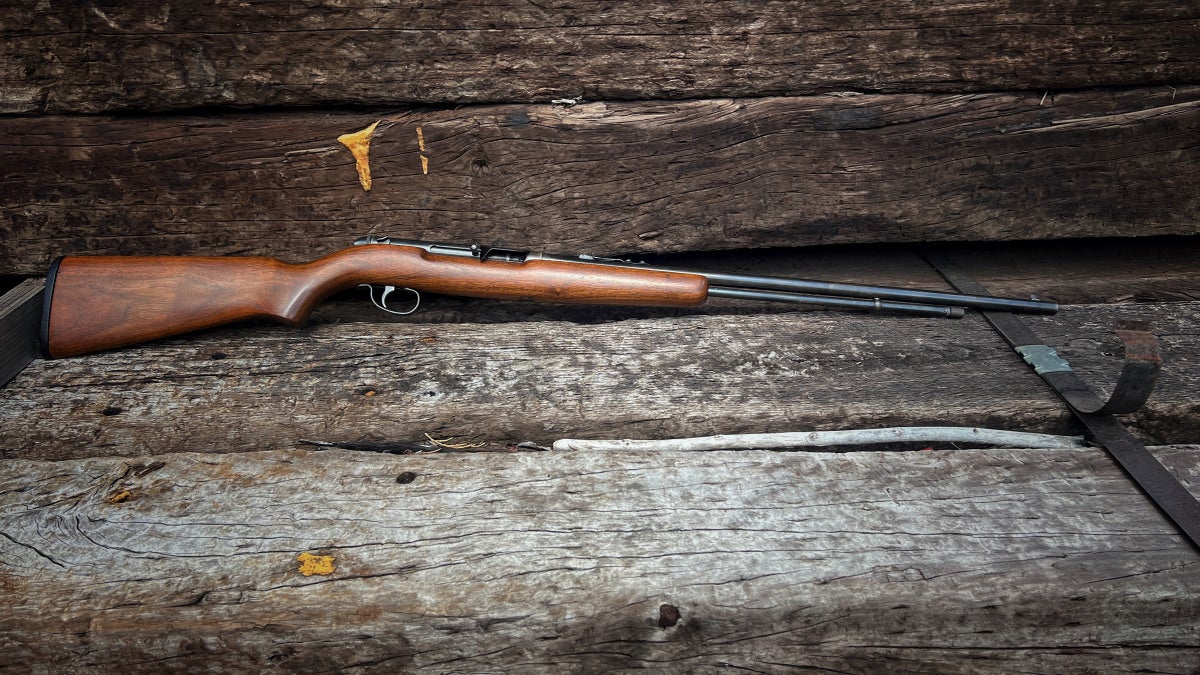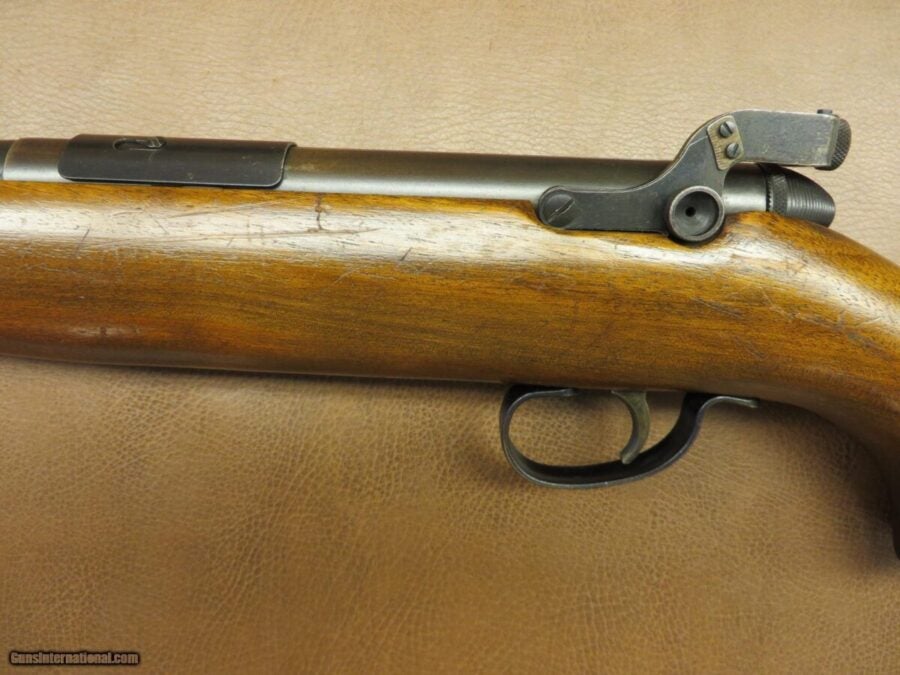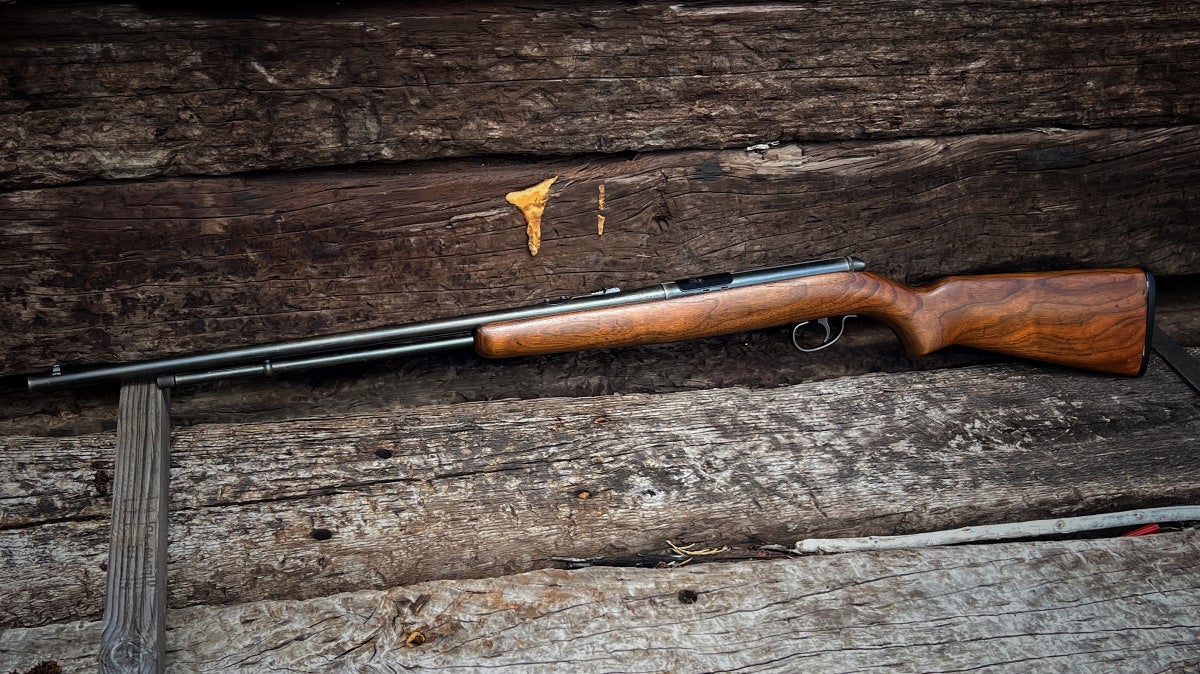Welcome, if you are a newcomer to this fun bi-weekly segment of AllOutdoor.com! Welcome back to our exploration of the Remington 550-1 .22 rimfire rifle! In Part 1, we covered the historical development and personal connections to this versatile American workhorse. Today, we’re diving into the various models and variations that emerged during the 550 series’ production run from 1941 to 1971.
Curious Relics Coverage on AllOutdoor:
- Curious Relics #106: Winchester Model 1911 SL – The “Widowmaker”
- Curious Relics #107: Widowmaker Variations – Winchester 1911SL Part II
- Curious Relics #108: Dating A Widowmaker – Winchester 1911 SL Part III
- Curious Relics #109: The Winchester Widowmaker 1911 SL Part IV
Welcome to our recurring series of “Curious Relics.” Here, we want to share all of our experiences, knowledge, misadventures, and passion for older firearms that one might categorize as a Curio & Relic – any firearm that is at least 50 years old according to the ATF. Hopefully along the way you can garner a greater appreciation for older firearms like we do, and simultaneously you can teach us things as well through sharing your own expertise and thoughts in the Comments. Understanding the firearms of old, their importance, and their development which lead to many of the arms we now cherish today is incredibly fascinating and we hope you enjoy what we have to share, too!
Research Challenges and Sources
Before we dig into the variations, I need to acknowledge the research challenges that come with documenting what were essentially “average Joe” guns. The 550 series wasn’t considered collectible during its production years, so detailed documentation is scarce compared to more famous firearms. Most owners simply used these rifles without keeping detailed records of variations or production changes.
The definitive reference work on this subject is Remington .22 Rimfire Rifles: The Complete Book on Remington .22 Rifles by John Gyde and Roy Marcot. Unfortunately, this book is long out of print, and I haven’t found copies for under $700. This humble writer loves to buy the books, support the authors, and do the proper research, but in this case, I was SOL. Instead, I’ve had to piece together information from various collector forums, auction descriptions, and the Blue Book of Gun Values – sources that require verification wherever possible.
Overview of the 550 Series Family
According to the Remington Forums database, the Model 550 series had a total production run of approximately 764,573 rifles over its 30-year lifespan. The series was designed by Kenneth Lowe and David Williams, utilizing a blowback semi-automatic action that became the foundation for all variations.
The main variations include:
- Model 550A (1941-1946)
- Model 550-1 (1946-1970)
- Model 550P (production dates unclear)
- Model 550-1P (production dates unclear)
- Model 550-2G (approximately 1950-1959)
Let’s just guess that the two P variants were made in similar lifetimes as their source model.
Model 550A: The Foundation (1941-1946)
The Model 550A was the original design that established the floating chamber concept. According to Blue Book data, approximately 34,577 units were manufactured between 1941-1946. The dual extractor system was apparently abandoned after the 550A, with all subsequent models using a single extractor design. Some forum discussions suggest the very earliest 550A models lacked provision for the shell deflector, making these extremely rare variants.

“Two Rifles with Scopes.” Rock Island Auction Company, https://www.rockislandauction.com/detail/2090/444/two-rifles-with-scopes. Accessed 27 May 2025.
Key Features:
- .22 Short, Long, and Long Rifle capability
- 24-inch barrel
- Tube magazine
- Dual extractors (unique to this model)
- Shell deflector
- Open sights
- Plain one-piece pistol stock
Model 550-1: The Workhorse (1946-1970)
The Model 550-1 became the most common and longest-produced variant, with approximately 730,000 manufactured over nearly 25 years. This model represented a refinement of the 550A design. As mentioned in Part 1, early production (1946-1948) was marked “550 1” without a dash, while later production (1949-1971) carried the “550-1” marking with a dash.

Key Features:
- .22 Short, Long, and Long Rifle capability
- 24-inch barrel
- Tube magazine
- Single extractor (simplified from 550A)
- Shell deflector
- Open sights
- Plain one-piece pistol stock
Model 550P and 550-1P: The Target Variants
The “P” models featured Remington’s “Point-crometer” aperture rear sight system, making them more suitable for target shooting applications. According to collector forums, these models are “not common, but there are a few around.”
The distinction between the 550P and 550-1P isn’t entirely clear from available sources, but it likely follows the same pattern as the base models – with the 550P being earlier production and the 550-1P being the later, refined version. These target-oriented models never achieved the popularity of dedicated target rifles, but they offered shooters who wanted the versatility of the floating chamber system with more precise sights for accuracy work.

“Remington Model 550-1P.” Guns International, https://www.gunsinternational.com/guns-for-sale-online/rifles/remington-rifles—rimfire/remington-model-550-1p.cfm?gun_id=100900802. Accessed 27 May 2025.
Model 550P Features:
- .22 Short, Long, and Long Rifle capability
- 24-inch barrel
- Tube magazine
- Single extractor
- Aperture rear sight (Point-crometer system)
- Plain one-piece walnut stock
Model 550-2G: The Gallery Gun (circa 1950-1959)
The Model 550-2G represents the most specialized and mechanically different variant in the 550 series. Designed specifically for shooting galleries and carnival use, this model was chambered only for .22 Short cartridges.

1953 Remington, 550-2G “Gallery Special”, 22 | Proxibid. https://www.proxibid.com/lotinformation/72933700/1953-remington-5502g-gallery-special-22-short-semiauto. Accessed 27 May 2025.
Key Features:
- .22 Short only (no multi-cartridge capability)
- 22-inch barrel (shorter than other models)
- Single extractor
- Open sights
- Plain one-piece pistol stock
- Eye screw for counter chain (shooting gallery security)
The 550-2G: A Different Beast Entirely
What makes the 550-2G particularly interesting is how extensively it differs from the standard 550 series rifles. According to detailed forum discussions from collectors who’ve examined multiple examples:
Mechanical Differences:
- No floating chamber: The barrel lacks the recess for the floating chamber, making this the only 550 series model without the “Williams patent” roll mark
- Modified bolt: Lightened by removing material, highly machined with a distinctive “coke bottle” shape
- Different receiver insert: Modified guides and longer feed ramp optimized for .22 Short cartridges
- Specialized magazine tube hanger: Features an extra loop not found on standard models
- Potentially different springs: Some evidence suggests action springs may be different lengths, though this varies between examples
- Modified carrier: May have a different shape than standard 550 series rifles
The absence of the floating chamber makes sense given that the 550-2G was designed for a single cartridge type. This simplification likely reduced manufacturing costs while creating a more reliable system for the high-volume shooting typical in gallery environments.
Production Timing and Identification
Based on available date code information from collector examples, the 550-2G was manufactured approximately between 1950-1959. However, some examples have appeared with the later-style shell deflector rather than the early type, suggesting production may have continued longer or that parts were mixed during assembly.

Photo Credit: Blue Book of Gun Values
The shooting gallery market was quite different from the sporting market. These rifles needed to be durable enough to withstand constant use by inexperienced shooters while being secure enough to prevent theft in carnival environments – hence the eye screw for chaining to the counter.
End of Part II: Remington 550-1 .22 Rimfire
The variations within the Remington 550 series reflect the different markets and applications these rifles served over three decades of production. From the original 550A’s robust dual-extractor design to the specialized 550-2G gallery gun, each variant tells a story about American shooting culture and the practical needs these rifles filled.
In our next installment, we’ll tackle the dating and identification of these rifles, diving into Remington’s barrel date coding system and discussing the specifications that define each model. We’ll also explore the aftermarket parts and accessories that became available for the 550 series over the years.

In closing, I hope our Curious Relics segment informed as well as entertained. This all was written in hopes of continued firearm appreciation and preservation. We did not just realize how guns were supposed to look and function. It was a long and tedious process that has shaped the world we live in. So, I put it to you! Is there a firearm out there that you feel does not get much notoriety? What should our next Curious Relics topic cover? As always, let us know all of your thoughts in the Comments below! We always appreciate your feedback.
The post Curious Relics #111: The Remington 550-1 .22 Rimfire Part II appeared first on AllOutdoor.com.


